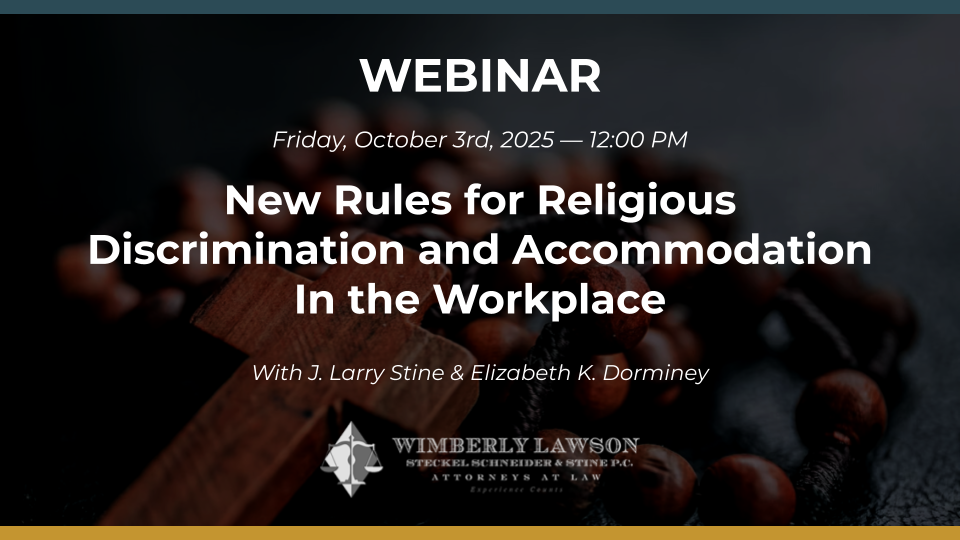SMALL EMPLOYERS CAN FORM ASSOCIATION HEALTH PLANS TO LOWER COSTS
Employers, particularly small employers and working owners, have a new way to control healthcare costs as a result of a Department of Labor (DOL) rule published in the Federal Register on June 21, 2018. President Trump in October 2017 signed an Executive Order directing the DOL to issue rules governing the formation and management of association health plans (AHPs), greatly expanding the potential use of these plans. The new rule will allow working owners and small businesses to band together, bound by geography or industry, to create a health plan that would be allowed to function like a large single employer plan. That is, by participating in AHPs, employees of small employers or working owners will be able to obtain coverage that is not subject to the regulatory complexity and burden that currently characterizes the market for individual and small group health coverage. Therefore, such AHPs can enjoy flexibility with respect to benefit package designs comparable to that enjoyed by large employers. AHPs also may help reduce the cost of health coverage to participating employer members by giving groups of employers increased bargaining power.
AHPs will not be subject to the Affordable Care Act (ACA) requirements of providing a long list of essential health benefits. Essential health benefits that AHPs can choose not to provide include prescription drugs, rehabilitative services and devices, laboratory services, preventive and wellness services, pediatric services, oral and vision care, and others.
DOL reports that up to 11 million people who are sole proprietors or work for small employers currently lack employer-sponsored insurance. The U.S. Congressional Budget Office predicts that 400,000 people who would have been uninsured will enroll in AHPs and 3.6 million people will enroll in AHPs who would have had other coverage, resulting in 4 million additional people enrolling in AHPs.
AHPs will remain regulated, however, by other laws, including the non-discrimination requirements of the Health Insurance Portability and Accountability Act (HIPAA). The new rule makes clear through examples, however, that employment-based classifications such as part-time or full-time do not violate the HIPAA non-discrimination requirements and may be used in determining eligibility or setting rates. AHPs also will remain subject to regulation under state laws governing Multiple Employer Welfare Arrangements (MEWAs) and are still subject to certain other federal mandates including coverage of mental health benefits, no lifetime or annual limits on certain benefits, and non-discrimination provisions. States might choose to support the new regulation, or they might implement their own requirements such as benefits, reserves and structure, or even reject certain types of AHPs. AHPs will continue to be prohibited from refusing to cover individuals with pre-existing conditions and from charging those with pre-existing conditions more in premiums. The new rule contains a provision that participation in an AHP will not subject employers to joint employer liability under any other federal or state rule. It also states that a business will not be considered an employer of its independent contractors merely by its participation in an AHP with its independent contractors.
Although AHPs in some form have existed for many years, the old rules provided that an AHP had to have an overwhelming commonality of interest for their members unrelated to the provision of healthcare benefits. Further, the old association rules could not include self-employed individuals. The new rule only requires that any association organizing an AHP must have at least one substantial business purpose unrelated to providing health coverage.
An association can also establish a subsidiary or subgroup of its members along relevant industry or business lines to serve as the "employer" for purposes of the plans, so that the provisions of the new rule would apply to the subgroup level, including the requirement that the group be controlled by its employer members.
Some groups expressed concerns about the new AHP program, warning that such "skinny" healthcare plans would cause healthy people to leave the ACA marketplace resulting in a less healthy population in ACA plans.
DOL has established an applicability date of September 1, 2018, for fully-insured AHPs, an applicability date of January 1, 2019 for existing self-insured AHPs complying with the Department's pre-rule test, and an applicability date of April 1, 2019 for new self-insured AHPs formed pursuant to the new rule.
Related Content
Get Email Updates
Recent Content

Trump Nominates Appointments to NLRB and EEOC but Policy Changes Likely to Be Delayed

DOL Launches Self-Audit Programs Designed to Help Employers Improve Compliance

DOL Must Release EEO-1 Reports to the Public under Open Records Laws

Current Advice on Active-Shooter Situations

New Policy for Federal Workers and Religious Expressions

